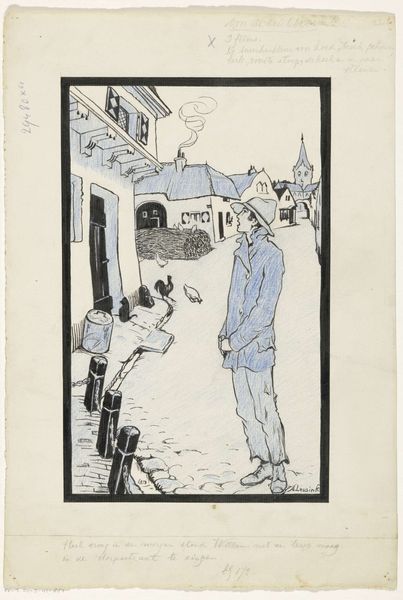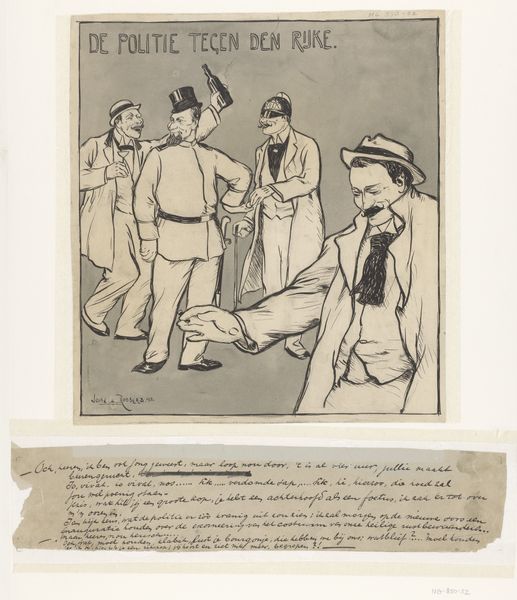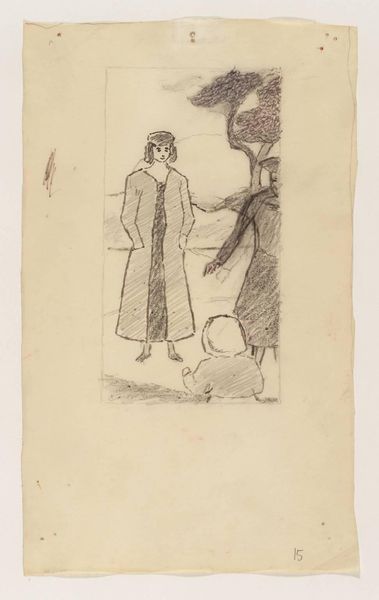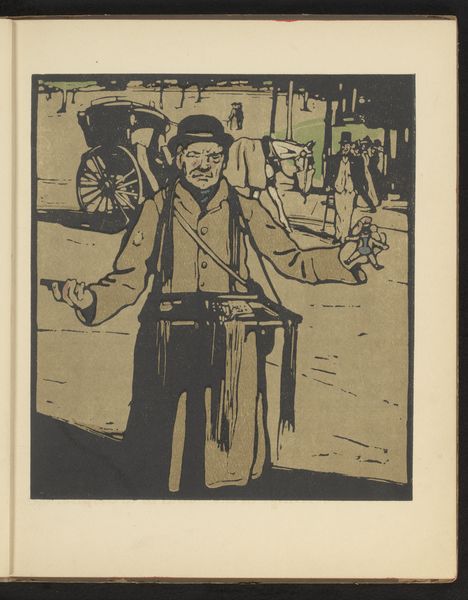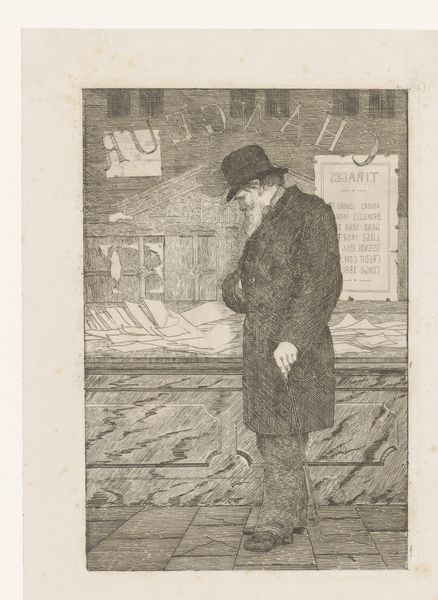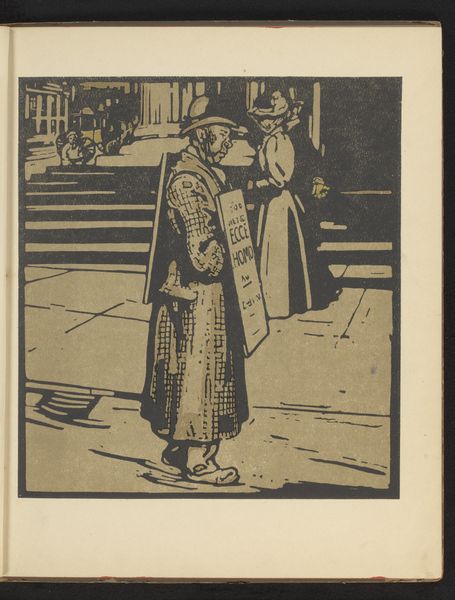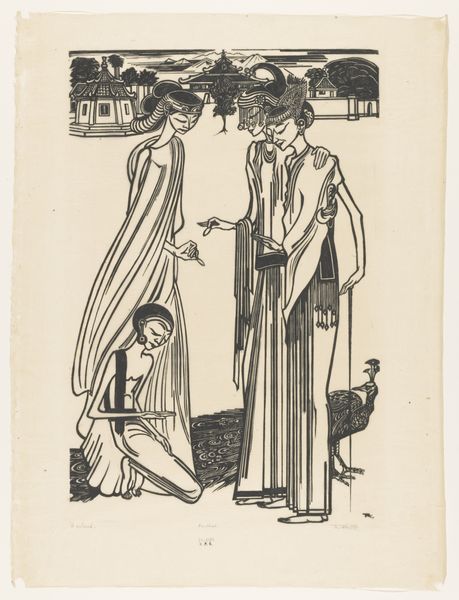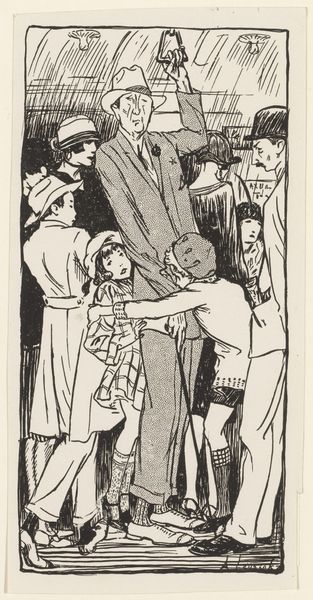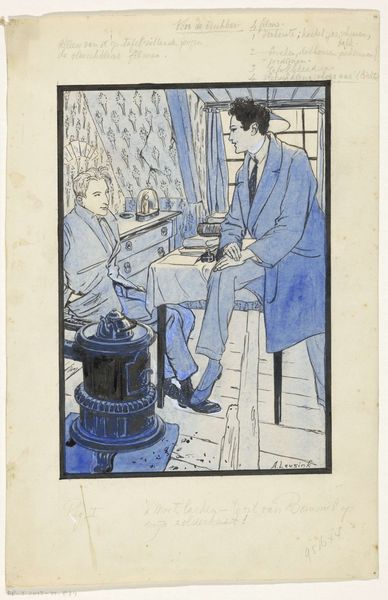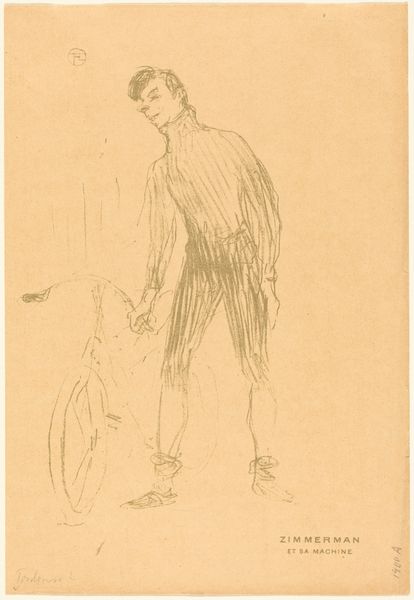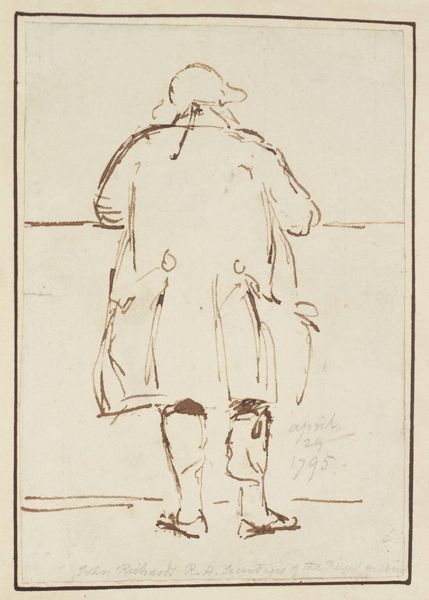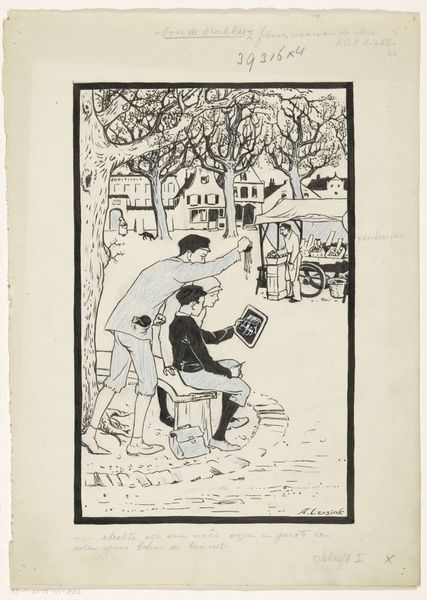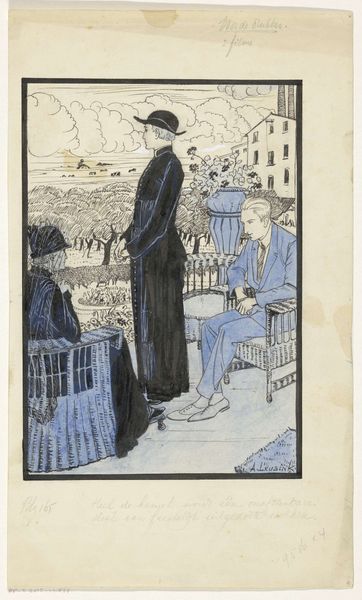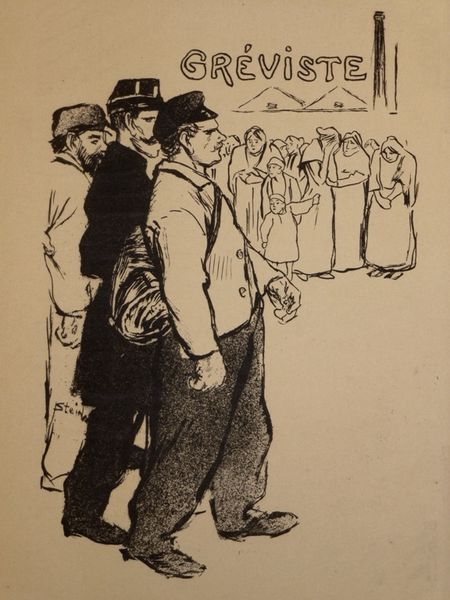
drawing, paper, ink
#
drawing
#
comic strip sketch
#
quirky illustration
#
narrative-art
#
cartoon sketch
#
paper
#
personal sketchbook
#
ink
#
ink drawing experimentation
#
pen-ink sketch
#
sketchbook drawing
#
cityscape
#
genre-painting
#
storyboard and sketchbook work
#
cartoon carciture
#
sketchbook art
#
modernism
Dimensions: height 336 mm, width 228 mm
Copyright: Rijks Museum: Open Domain
Curator: It strikes me immediately as a poignant tableau, quite reminiscent of an illustration from a story, perhaps even a political cartoon. There's a real tension between the well-dressed gentleman and the supplicant. Editor: Indeed. The drawing is titled "Willem Loopt over een Brug in een Stad", which translates to "Willem Walks Over a Bridge in a City." It’s rendered in ink on paper, dating from before 1926 and created by Anny Leusink. There's definitely a social narrative unfolding. Curator: Absolutely, but Willem himself appears almost oblivious. I wonder, does he represent a particular societal archetype or attitude prevalent during the time? Is the beggar meant to represent all the city's dispossessed? Her posture, hunched and veiled, speaks of profound despair and it gives this work a stark, empathetic quality. Editor: That contrast you point out really resonates. We can explore it from a historical perspective: post-World War I society was grappling with widespread poverty, and social inequalities were becoming increasingly visible and debated. I wonder what that Sphinx implies, perched aloofly between both. The cityscape as stage amplifies the visual narrative. Curator: Sphinxes are fascinating liminal symbols. Here, perhaps it is the silent, ancient observer of transient human dramas. I wonder whether the city context is the seat of progress or something more ancient, evoking timeless themes of power, privilege, and exclusion. The ink drawings of the building echo throughout western art from the same time. The Sphinx is looking away; it seems we also are meant to look past. Editor: Considering Leusink's possible social commentary gives added weight to that stark juxtaposition of the oblivious walker and the supplicant. Perhaps Leusink is implying that indifference allows such inequalities to persist. The way public spaces mediate and sometimes mask disparities… that's quite compelling here. Curator: Agreed. There is a clear symbolic dialogue unfolding: individual against institution, apathy versus desperation, revealing fault lines etched not just on paper but in the very structure of society itself. Editor: Examining Leusink's work through this socio-historical lens offers a fascinating study. What initially seemed a simple illustration holds within it layers of critique of urban inequality. It challenges us to reflect on whose stories are amplified and whose voices are silenced.
Comments
No comments
Be the first to comment and join the conversation on the ultimate creative platform.
